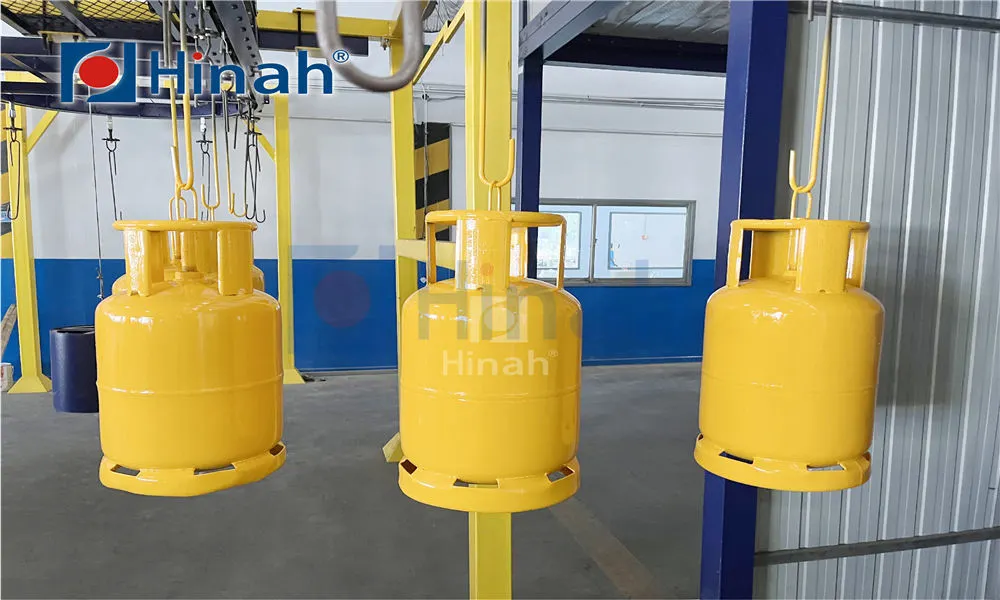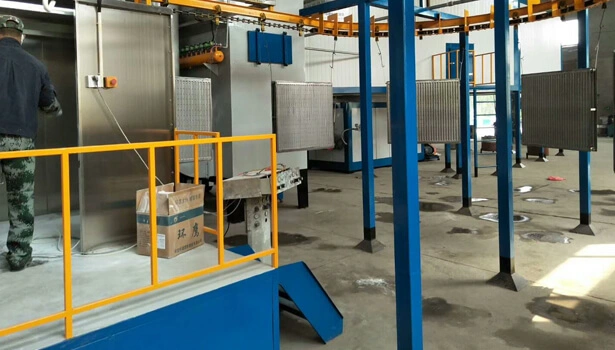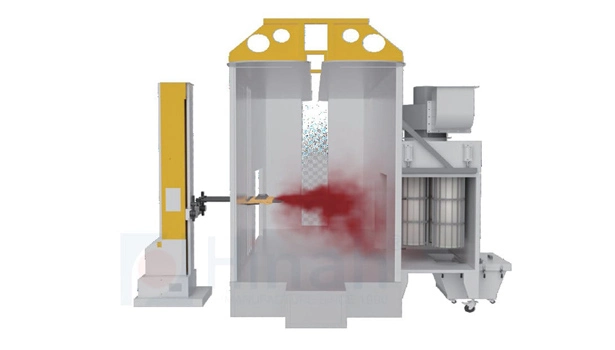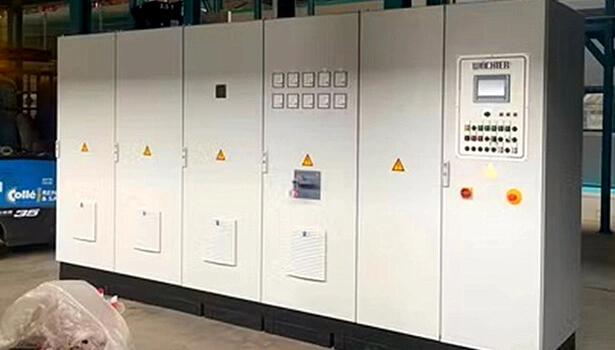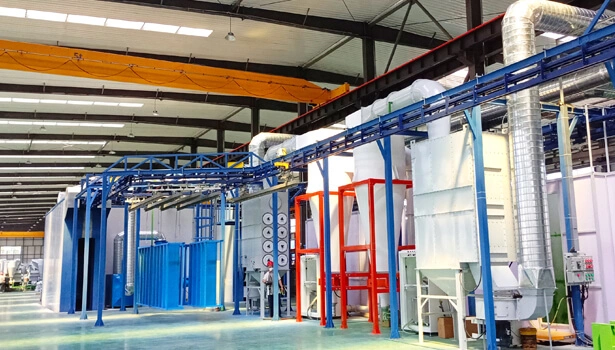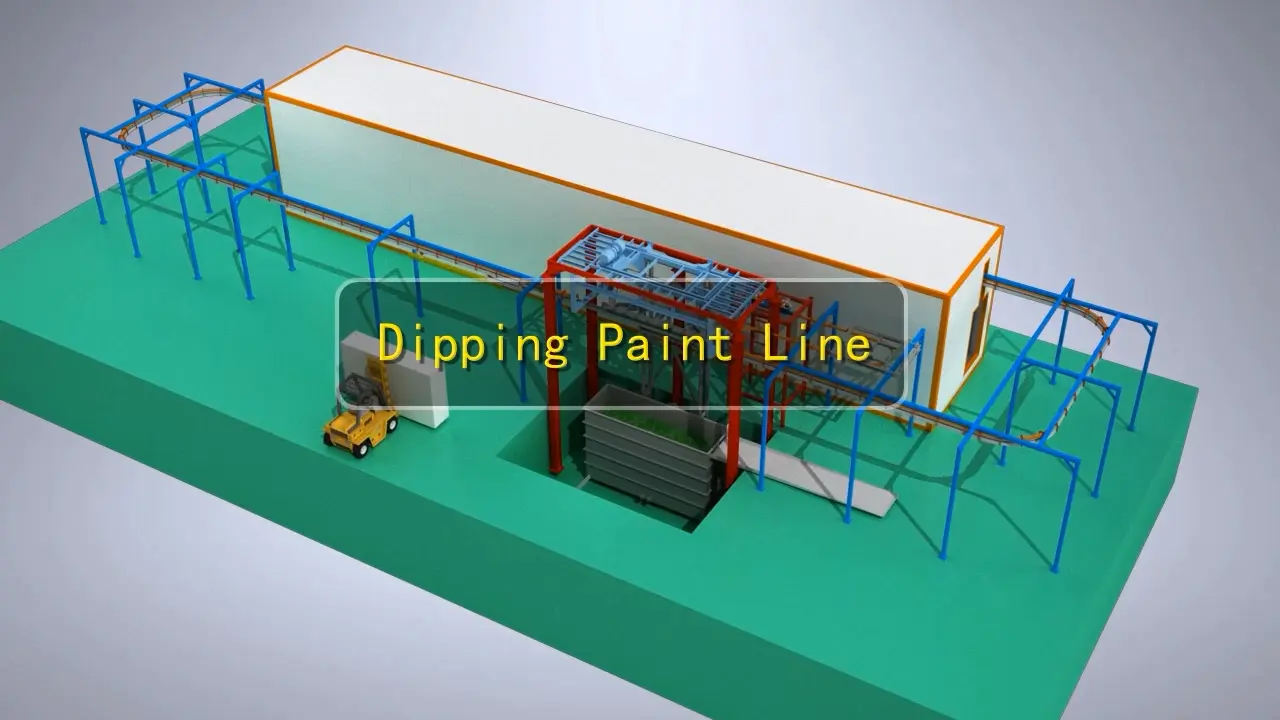What is E-Coating and Why is it Non-Negotiable for Small Electric Cars?
Electrocoating, commonly called E-Coat or electrophoretic deposition, is an immersion process where an electrically charged paint is deposited onto a conductive substrate submerged in a bath. For small electric cars, the entire body-in-white (BIW) – the bare metal shell after welding – undergoes this treatment. A voltage is applied, causing charged paint particles to migrate and form an exceptionally uniform, continuous film over every surface, nook, and cranny, even complex internal cavities inaccessible to spray guns.
Why is this absolutely essential?
Unmatched Corrosion Protection: Small electric cars often operate in diverse environments. The Small Electric Cars E-Coating Line provides the foundational defense against rust, a primary cause of structural failure and costly warranty claims. This protection is vital for battery enclosures and electrical components.
Complete Coverage: The electrophoretic nature ensures paint reaches every surface, including seams, joints, and box sections critical in a unibody structure. This is impossible to achieve consistently with conventional spray methods.
Adhesion Foundation: The E-Coat layer creates an ideal, microscopically rough surface for subsequent primer and topcoat layers, significantly enhancing overall paint adhesion and system durability.
Safety & Performance: Preventing corrosion maintains structural integrity over the vehicle's lifespan. Protecting electrical grounding points and battery trays is paramount for safety and system reliability in a Small Electric Car.
Efficiency & Sustainability: Modern Small Electric Cars E-Coating Line technology is highly efficient in material usage (minimal waste) and increasingly utilizes low-VOC or VOC-free coatings, aligning with the eco-conscious ethos of EVs.
Essentially, skipping the Small Electric Cars E-Coating Line would drastically compromise vehicle longevity, safety, and quality, making it an indispensable step in manufacturing.
Inside the Process: Step-by-Step Journey Through a Small Electric Cars E-Coating Line
A modern Small Electric Cars E-Coating Line is a marvel of chemical engineering and automation. Here’s the typical sequence:
Pre-treatment (Cleaning & Conversion Coating): The BIW undergoes rigorous cleaning to remove oils, grease, welding residues, and dirt. This is followed by phosphating or newer zirconium/nanoceramic conversion coatings. This step etches the metal microscopically and creates a surface that enhances E-Coat adhesion and corrosion resistance. Multiple rinses ensure purity.
E-Coating Bath Immersion: The clean, pre-treated BIW is immersed in a large tank filled with the E-Coat bath. A direct current (DC) voltage is applied. The BIW acts as one electrode (cathode for cathodic E-Coat – the most common type for autos), while strategically placed counter-electrodes (anodes) surround it. Charged paint particles migrate towards the oppositely charged BIW surface.
Electrodeposition & Film Build: Paint particles deposit uniformly onto the metal surface. The thickness of the film is precisely controlled by voltage, bath chemistry, temperature, and immersion time. The process continues until the insulating paint film itself limits further deposition (self-limiting), ensuring exceptional uniformity.
Post-Rinse (Ultrafiltration - UF): As the BIW exits the bath, it carries excess, un-deposited paint. This valuable material is recovered using an ultrafiltration (UF) system. The BIW is rinsed with permeate from the UF loop, minimizing paint loss and environmental impact – a key efficiency of the Small Electric Cars E-Coating Line.
Baking/Curing: The rinsed BIW enters large curing ovens. Heat triggers a cross-linking chemical reaction within the deposited paint film, transforming it from a wet, soft layer into a hard, durable, and highly adherent coating. Temperatures typically range from 160°C to 200°C (320°F to 390°F).
Inspection & Quality Control: Automated systems (vision systems, eddy current, or ultrasonic gauges) rigorously inspect the cured E-Coat for thickness, uniformity, coverage (especially in cavities), and absence of defects like pinholes or craters. Any issues trigger alerts for corrective action.
This entire sequence within the Small Electric Cars E-Coating Line is tightly controlled and monitored by sophisticated process control systems to ensure consistent, high-quality results for every single vehicle body.
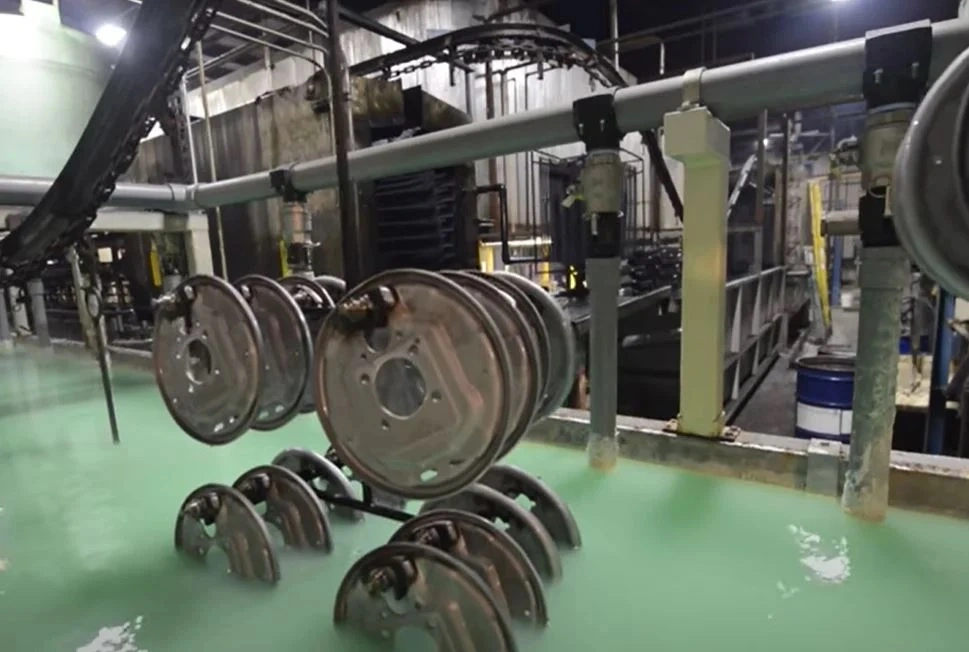
Key Benefits Driving the Adoption of Small Electric Cars E-Coating Line
Investing in a dedicated Small Electric Cars E-Coating Line delivers substantial competitive advantages:
Superior Corrosion Warranty Fulfillment: The exceptional protection directly translates into longer corrosion warranties, boosting consumer confidence and brand reputation for durability – crucial in the EV market.
Enhanced Vehicle Longevity & Resale Value: Protecting the core structure from rust ensures the small electric car lasts longer, maintaining structural integrity and ultimately supporting higher resale values.
Optimized Paint System Performance: The E-Coat provides the perfect base for subsequent primer and topcoat layers, improving overall appearance, chip resistance, gloss retention, and long-term color stability.
Material Efficiency & Cost Reduction: High transfer efficiency (up to 95%+ with UF rinse recovery) minimizes paint waste compared to spray processes. Automation reduces labor costs. Lower defect rates also reduce rework costs.
Environmental Compliance: Modern E-Coat technologies are predominantly water-based with low or zero VOCs. Closed-loop UF rinsing drastically reduces wastewater generation and contaminant discharge, simplifying compliance with stringent environmental regulations.
Design Flexibility: The ability to coat complex shapes and enclosed areas allows designers more freedom without worrying about corrosion traps compromising the Small Electric Car.
Improved Safety: Protecting structural components and critical electrical grounding points directly contributes to the long-term safety of the vehicle.
These benefits collectively make the Small Electric Cars E-Coating Line a critical investment for manufacturers aiming for quality, efficiency, and sustainability.
Unique Challenges and Solutions in Small Electric Cars E-Coating Line Operations
While essential, operating a Small Electric Cars E-Coating Line presents specific challenges, especially for smaller vehicles:
High Energy Consumption (Curing Ovens): Baking ovens are major energy users. Solutions: Investing in high-efficiency ovens with improved insulation, waste heat recovery systems, and exploring lower-temperature cure coatings. Optimizing oven loading and line speed also helps.
Complex Geometry & Cavity Coverage: Small cars often have intricate structures with deep cavities and overlaps. Ensuring complete E-Coat coverage everywhere is paramount. Solutions: Advanced tank design with optimized anode placement, precise control of bath parameters (voltage, conductivity, temperature), and potentially using simulation software during line design. Rigorous cavity testing protocols are mandatory.
Bath Maintenance & Control: Maintaining the complex chemical balance (pH, solids content, solvent levels, conductivity) of the large E-Coat bath is critical for consistent quality. Contamination is a constant threat. Solutions: Sophisticated automated monitoring and dosing systems, regular ultrafiltration, strict pre-treatment quality, and robust filtration systems. Skilled chemical management personnel are vital.
Water Usage & Wastewater Treatment: Pre-treatment and rinsing stages consume significant water and generate wastewater requiring treatment. Solutions: Implementing advanced counter-current rinsing systems, maximizing UF permeate reuse in rinses, and investing in efficient on-site wastewater treatment or recycling technologies (e.g., reverse osmosis).
Initial Capital Investment: Building and equipping a state-of-the-art Small Electric Cars E-Coating Line requires substantial upfront investment. Solutions: Careful planning for scalability, exploring modular designs, focusing on long-term ROI through durability benefits and reduced warranty costs, and potentially utilizing shared or contract coating facilities for lower-volume startups.
Material Compatibility: Ensuring the E-Coat chemistry is compatible with different metals (steel, aluminum, potentially composites) used in the BIW. Solutions: Close collaboration with coating suppliers to develop and validate materials for multi-metal bodies common in EVs.
Proactive management and technological innovation are key to overcoming these challenges and ensuring the Small Electric Cars E-Coating Line operates reliably and efficiently.
Innovations and Future Trends Shaping Small Electric Cars E-Coating Line
The evolution of the Small Electric Cars E-Coating Line is driven by demands for greater efficiency, sustainability, and performance:
Low-Temperature & Energy-Cure Technologies: Development of E-Coats that cure at significantly lower temperatures (e.g., 120-140°C) or using UV/EB (Ultraviolet/Electron Beam) curing is accelerating. This drastically reduces oven energy consumption and carbon footprint.
Advanced Pre-treatment: Transition from traditional zinc phosphates to thinner, more environmentally friendly zirconium or nanoceramic conversion coatings. These reduce sludge, water usage, and energy, while maintaining or improving performance.
Smart Manufacturing & Industry 4.0: Integration of IoT sensors, real-time process analytics, AI-driven predictive maintenance, and digital twins for the Small Electric Cars E-Coating Line. This enables real-time optimization, minimizes defects, predicts bath life, and reduces downtime.
Sustainable Chemistry: Continued development of bio-based resins, further reduction/elimination of VOCs, heavy metals (like lead, nickel), and harmful solvents in E-Coat formulations. Focus on cradle-to-gradle sustainability.
Enhanced Functional Coatings: Beyond corrosion protection, research into E-Coats with added functionalities like improved thermal management for battery packs, enhanced electrical insulation properties, or even intrinsic color (reducing topcoat layers).
Modular & Compact Designs: For smaller manufacturers or flexible production, more modular and potentially compact Small Electric Cars E-Coating Line designs are emerging, reducing footprint and initial investment barriers.
Cavity Sealing Integration: Exploring ways to integrate or enhance the effectiveness of cavity waxes or sealers applied after E-Coat, leveraging the line's access for superior protection.
These innovations promise to make the Small Electric Cars E-Coating Line even more efficient, sustainable, and integral to producing high-quality, durable electric vehicles.
Environmental Impact and Sustainability of the Small Electric Cars E-Coating Line
Sustainability is core to the EV proposition, and the Small Electric Cars E-Coating Line plays a significant role:
Reduced VOC Emissions: Modern cathodic electrocoats are predominantly water-based, dramatically lowering VOC emissions compared to solvent-based primers. This significantly improves air quality in and around the plant.
High Material Utilization: The electrophoretic process combined with ultrafiltration rinse recovery achieves unparalleled paint transfer efficiency (often >95%). This minimizes raw material consumption and waste generation.
Water Conservation: Advanced rinsing techniques (counter-current flow, UF permeate reuse) drastically reduce fresh water intake. Closed-loop systems in pre-treatment are also becoming more common.
Reduced Hazardous Waste: Eliminating heavy metals (like lead-based pigments) and transitioning to non-phosphate pre-treatments significantly reduces the generation of hazardous sludge and simplifies wastewater treatment.
Energy Efficiency Focus: Innovations in low-cure coatings and high-efficiency ovens directly lower the carbon footprint associated with the E-Coating process.
Longer Vehicle Lifespan: By preventing corrosion, the Small Electric Cars E-Coating Line extends the usable life of the vehicle, reducing the environmental burden associated with manufacturing new cars and disposing of old ones prematurely.
Manufacturers continuously strive to optimize the Small Electric Cars E-Coating Line, making it a cornerstone of sustainable automotive manufacturing for the electric era.
Conclusion
The Small Electric Cars E-Coating Line is far more than just a paint step; it's the technological backbone ensuring the durability, safety, and longevity that define a quality small electric car. Its ability to deliver unmatched corrosion protection with exceptional coverage, efficiency, and increasingly sustainable credentials makes it indispensable. From the intricate chemistry of the bath to the roar of the curing ovens, this complex process shields the future of urban mobility. As innovations in low-cure coatings, smart manufacturing, and sustainable chemistry continue to evolve, the Small Electric Cars E-Coating Line will remain at the forefront, silently protecting the compact EVs that are driving us towards a cleaner automotive future. For manufacturers, investing in and optimizing this critical line is not just an operational necessity, but a strategic imperative for building trust and value in the competitive small electric car market.



